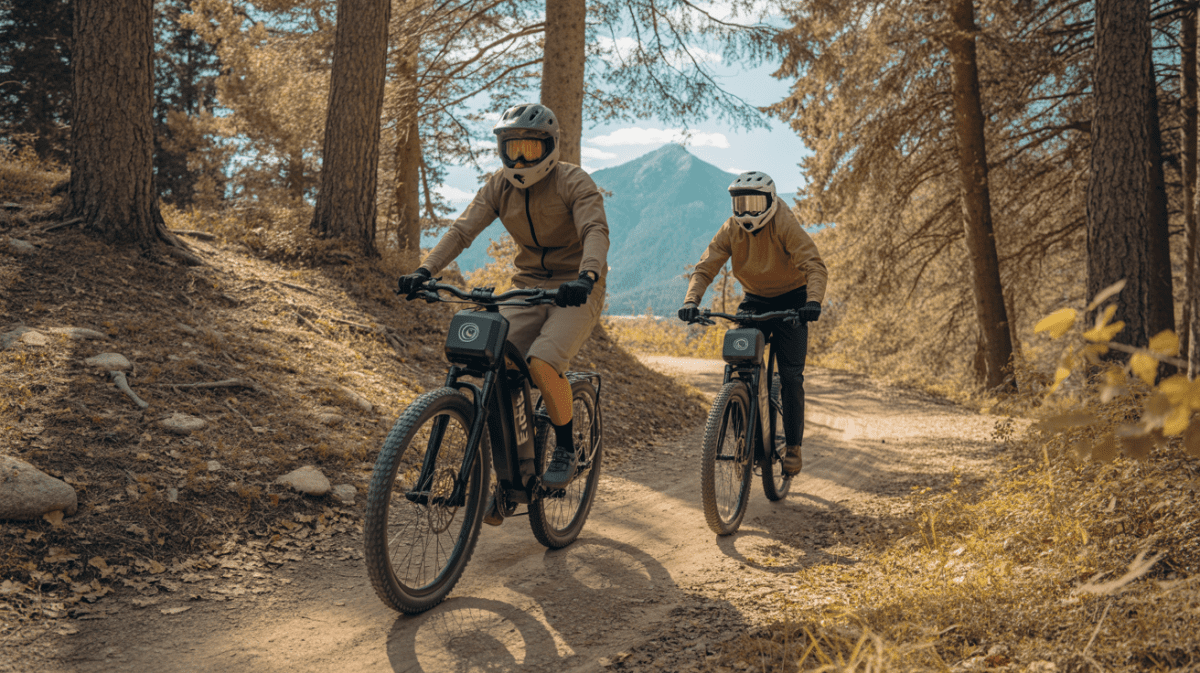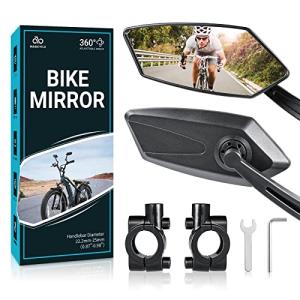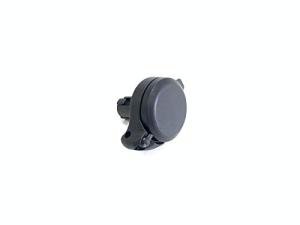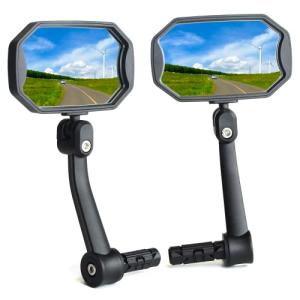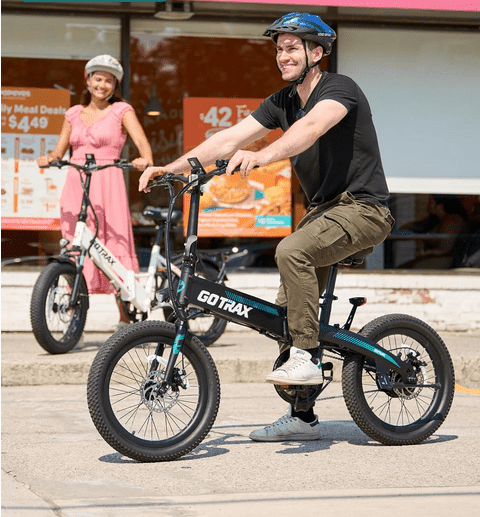How Do I Choose an Electric Bike for Off-Road Trails? Expert Guide
Picking out an electric bike for off-road trails means weighing up power, durability, and terrain compatibility. You'll want to focus on motor torque (ideally 80-120+ Nm for tough trails), battery capacity (look at watt-hours, not just amp-hours), suspension type, and tire width that matches your riding style and the terrain you ride most.

Off-road electric bikes are a different breed from regular e-bikes. They need beefier frames, stronger motors, and more rugged parts to survive rough ground.
Think about whether you want a hardtail for smoother trails or full suspension for gnarlier descents. The motor's torque makes a bigger difference than just peak wattage—instant torque helps you crawl up steep, rocky climbs without spinning out.
Modern off-road e-bikes really do bring a new level of capability—instant power, quiet motors, and a ride feel that's hard to beat. But with so many choices, it can honestly get overwhelming.
Understanding specs like battery range, brakes, and frame geometry will help you narrow things down and avoid wasting money on stuff you don't need.
Key Takeaways
- Motor torque and battery capacity (in watt-hours) matter more than peak wattage for off-road riding
- Suspension type should fit your terrain—hardtails for smoother ground, full suspension for technical stuff
- Tire width, brakes, and frame geometry all need to suit your trails and riding style
Key Criteria for Choosing an Off-Road Electric Bike
Picking the right off-road e-bike means thinking about trail conditions, your riding style, and the safety features you really need. These three things will shape which e-bike actually feels right for your adventures.
Assessing Trail Difficulty and Terrain Types
The trails you ride really dictate which e-bike makes sense. Rocky mountain paths need different setups than smooth dirt or sandy fire roads.
If you face steep climbs, you'll want high-torque motors. Most solid off-road e-bikes deliver 50-80 Nm of torque, which is usually enough for climbing.
Technical terrain with rocks and roots? Go for full suspension. Hardtails are fine for smoother stuff but can get bouncy and tough on rough ground.
Battery capacity counts on longer rides. Here’s a rough breakdown:
- 20-25 miles for short trails
- 40-50 miles for all-day rides
- Removable batteries if you want to swap for longer trips
Tire width shapes your grip and comfort. Narrow tires roll quickly on packed dirt, while wide ones grip better on loose sand or gravel.
Frame geometry changes the ride feel. Longer wheelbases help on fast descents. Shorter frames are nimble on tight switchbacks.
Understanding Your Riding Style and Goals
Your goals matter way more than you might think. Different riders need different features from their e-bikes.
Fitness-focused folks want pedal-assist modes that let them get a workout. Look for bikes with several power levels and maybe even an option to ride with no motor help.
If you're an adventure seeker, you’ll want max range and tough frames. Bigger batteries and cargo mounts help for longer trips.
Speed lovers should check out Class 3 e-bikes—they can hit 28 mph with pedal assist, if the trail allows.
Casual riders will probably care most about comfort and ease of use. Step-through frames, cushy seats, and simple controls keep things fun and stress-free.
Weight capacity matters. Most off-road e-bikes can handle 250-300 pounds, including you and your gear. Bigger riders need beefier frames and more powerful motors.
Prioritizing Safety and Control Features
Safety becomes a big deal when you’re off-road. Good brakes, lights, and visibility gear help you avoid trouble.
Hydraulic disc brakes are the gold standard for heavy e-bikes. They work better than mechanical brakes, especially in the wet or mud.
Suspension smooths out the bumps and keeps you in control. Full suspension is best for rough trails, while front suspension is okay for more moderate stuff.
Don’t forget these basics:
- Bright LED lights for early or late rides
- Reflective bits on your frame
- Horn or bell to warn others
Motor placement changes how the bike feels. Mid-drive motors balance the bike and climb hills better. Hub motors are cheaper but can feel a bit odd on technical terrain.
Display screens help you keep track of battery, speed, and assist level. A clear display can save you from walking home with a dead battery.
Essential Components and Technical Specifications

Off-road e-bikes need certain technical features to really handle tough trails. Motor placement, battery size, frame material, and pedal assist all play a part in how the bike performs.
Motor Types: Mid-Drive vs. Rear Hub
Mid-drive motors mount at the bottom bracket and power your pedals directly. This gives you better weight balance and lets you use the bike's gears for more control.
Mid-drives deliver more torque, making them great for steep climbs and trickier terrain. The motor works with your drivetrain so you feel more in tune with the bike.
Rear hub motors live in the back wheel. A 750w hub motor gives you plenty of power for most trails. Hub motors are cheaper and need less maintenance than mid-drives.
The ride feels different, though. Hub motors push the bike forward instead of boosting your pedal power, which can make steep climbs a bit more challenging.
If you're serious about off-road, mid-drive motors usually win out on technical trails.
Battery Capacity and Removable Battery Considerations
Battery capacity is measured in watt-hours (Wh). For trail riding, 500-750 Wh is a good target. Bigger batteries add weight, but also give you more range.
A removable battery is super handy. You can charge it inside or bring a spare for longer rides.
Battery life depends on the trail, your weight, and how much assist you use. Steep hills drain batteries quickly. Most people get 20-40 miles per charge on trails, give or take.
Cold weather zaps battery power by 20-30%. Removable batteries let you keep them warm until you need them.
Look for at least 500 Wh if you want to ride trails. Removable batteries just make life easier, especially if you like long adventures.
Frame Material: Aluminum vs. Carbon
Aluminum frames are the go-to for most trail riders. They're affordable, tough, and can take a beating on rocky ground.
Aluminum adds a bit of weight—usually 4-6 pounds for the frame. The slight flex can actually feel good on long rides.
Carbon frames cut 2-3 pounds and soak up vibrations better. They’re stiffer when you pedal, but cost a lot more.
Carbon can crack if you hit something hard, while aluminum usually just dents. If you ride rough trails and hit rocks a lot, aluminum's probably a safer bet.
Honestly, for most off-roaders, aluminum is the sweet spot for strength, price, and repairability.
Pedal Assist and Range Factors
Motor power on trail bikes ranges from 250-750 watts. More watts mean easier climbs but shorter battery life. Most folks find 500-750 watts just right.
Pedal assist usually gives you 3-5 power levels. Eco mode stretches your range, while turbo mode helps you blast up hills.
Range really depends on how much assist you use. Eco mode can get you 40-60 miles, turbo maybe 15-25. Most rides are somewhere in the middle—25-35 miles per charge is pretty typical.
Heavier riders and steeper trails eat up battery faster. A 200-pound rider will use 20-30% more juice than someone lighter on the same trail.
Smart riders save high power for climbs and use lower assist on the flats to make the battery last.
Tire and Suspension Choices for Trail Performance

The right tire width and suspension setup can totally change how your e-mountain bike handles rough trails. Tires affect grip and comfort, while suspension keeps you in control and less beat up on tough rides.
Fat Tires vs. Standard Off-Road Tires
Fat tire e-bikes use tires at least 3.8 inches wide. These give you better grip on loose stuff like sand, snow, or soft dirt.
Standard off-road tires usually range from 2.1 to 2.8 inches wide. They're faster on hard-packed trails and use less battery than fat tires.
Fat Tire Benefits:
- Float better on soft ground
- More comfort thanks to lower air pressure
- Extra stability, which new riders appreciate
Standard Tire Advantages:
- Lighter overall weight
- Climb better
- Let you ride farther on one charge
If you mostly ride established trails, standard tires are the way to go. If you explore sand, snow, or really loose terrain, fat tires make more sense.
Tire pressure matters a lot, too. Fat tires can go as low as 5-15 PSI, while standard ones usually need 20-30 PSI.
Full Suspension and Front Suspension Options
Full suspension e-MTBs have shock absorbers in both the front and rear.
Front suspension models only have a suspension fork up front.
Front suspension bikes cost less and weigh about 5-10 pounds less than full suspension models.
They work well on moderate trails with roots and rocks.
Full suspension bikes absorb impacts better on rough terrain.
The rear shock helps reduce fatigue on long rides and keeps the tire in contact with the ground.
Front Suspension Pros:
- Lower purchase price
- Less maintenance required
- Better pedaling efficiency on climbs
Full Suspension Benefits:
- Superior comfort on rough trails
- Better traction on technical terrain
- Reduced rider fatigue
Most electric mountain bikes include at least front suspension.
If you ride very rough trails or spend hours on the bike, full suspension is probably worth it.
Suspension Fork Technologies
Air suspension forks use compressed air instead of metal springs.
They adjust easily for different rider weights and trail conditions.
Coil suspension forks use metal springs and deliver consistent performance in all temperatures.
They need less maintenance but don’t adjust as easily.
Travel distance shows how much the fork compresses.
Trail e-MTBs usually have 120-160mm of travel.
More travel soaks up bigger impacts, but it can make climbing tougher.
Key fork features include:
- Lockout controls for climbing
- Rebound adjustment for different speeds
- Compression damping for impact control
Quality suspension forks from brands like RockShox and Fox cost $300-800.
Budget forks under $200 often lack adjustment features and durability.
Most riders do best with air forks and 130-140mm travel.
This setup handles most trail conditions without getting too heavy or complicated.
Braking Systems for Off-Road Safety
Hydraulic disc brakes give the most reliable stopping power for off-road electric bikes, especially on steep descents and technical terrain.
Disc brakes outperform other types in muddy, wet, and dusty conditions that you’ll find on trails.
Hydraulic Disc Brakes Advantages
Hydraulic disc brakes offer better stopping power than mechanical systems.
They use brake fluid to transfer force from the lever to the pads, so you get more consistent braking performance without as much effort.
The sealed hydraulic system gives better modulation on tricky descents.
You can control your speed more precisely when you’re picking your way through rocks, roots, and steep sections.
This helps prevent those sketchy moments where too much braking could cause a crash.
Heat dissipation matters for off-road riding.
Long downhills generate a lot of heat, and hydraulic disc brakes handle it better than other brake types without losing power.
Hydraulic systems also need less maintenance.
They self-adjust as the pads wear, so you’re not fiddling with adjustments during long trail rides.
Disc Brakes vs. Other Braking Types
Disc brakes mount to the wheel hub, not the rim.
This keeps braking performance steady even when wheels get muddy or wet.
Rim brakes lose effectiveness when debris builds up on the wheel surface.
Disc brakes are a must for off-road conditions because of their weather resistance.
They work the same in rain, mud, and dust—other brakes just can’t keep up in those conditions.
Weight differences between brake types:
| Brake Type | Weight | Off-Road Performance |
|---|---|---|
| Disc Brakes | Heavier | Excellent |
| Rim Brakes | Lighter | Poor in wet/mud |
| Coaster Brakes | Medium | Very limited control |
Stopping distances are shorter with disc brakes on loose surfaces.
Gravel, dirt, and wet trails need maximum braking force—other brakes just can’t match that when it counts.
Top Off-Road Electric Bike Models and Real-World Considerations
The market’s packed with standout models for all sorts of off-road conditions, from budget-friendly picks to premium beasts.
Testing on actual trails shows which bikes deliver the best value for different riding needs.
Best Electric Off-Road Bikes in 2025
The Aventon Aventure.2 leads the fat-tire category with its 750W motor and 4-inch tires.
This bike handles sand, snow, and loose terrain with real confidence.
The Specialized Turbo Tero X 4.0 dominates technical trails.
Its full suspension and sharp handling make it a top pick for rocky terrain and steep climbs.
Velotric Nomad 1 is versatile for mixed terrain.
The bike switches easily between pavement and dirt, thanks to its balanced design.
The Ride1up Prodigy V2 brings strong performance at a lower price.
Its 750W motor and quality parts compete with pricier models.
Premium choices like the Cannondale Moterra Neo 4 offer advanced motor systems and full suspension for serious trail riding.
Field-Tested Models and Brand Overviews
Real-world testing shows the Aventon Aventure.2 shines on beaches and snowy trails.
Its fat tires give great traction, but you’ll notice more rolling resistance on hard surfaces.
The Specialized Turbo Tero X 4.0 feels most at home on technical mountain trails.
Riders say it handles steep descents and rocky sections with confidence.
Velotric Nomad 1 performs well across varied terrain.
It’s comfortable on light trails and gravel roads alike.
Ride1up Prodigy V2 tests show it’s reliable on moderate trails.
It can struggle with really technical terrain but covers most off-road conditions without a fuss.
Brand reliability varies a lot.
Specialized and Cannondale have strong dealer networks and a solid track record.
Direct-to-consumer brands like Ride1up offer good value but less service support.
Budget and Value Assessment
| Price Range | Model Examples | Key Features | Best For |
|---|---|---|---|
| $1,200-$1,800 | Ride1up Prodigy V2 | 750W motor, basic suspension | Budget-conscious riders |
| $1,800-$2,500 | Aventon Aventure.2, Velotric Nomad 1 | Fat tires or versatile design | Recreational off-road use |
| $4,000-$6,000 | Specialized Turbo Tero X 4.0 | Full suspension, premium components | Serious trail riders |
Entry-level models around $1,500 work well for casual trail riding.
They handle moderate terrain but don’t have the fancy features.
Mid-range options from $2,000-$3,000 usually give the best value for most people.
You get good components and flexible designs.
Premium models over $4,000 deliver pro-level performance.
These bikes justify the higher price with top components and advanced tech.
Total ownership costs include maintenance and the chance of repairs.
Premium brands usually offer better long-term support and easier access to parts.
Maintenance, Accessories, and Final Purchasing Tips
Good maintenance and the right accessories make off-road e-biking safer and way more fun.
Choosing a quality dealer and test riding bikes before buying helps you avoid expensive mistakes.
Upkeep and Durability in Off-Road Conditions
Off-road e-bikes deal with harsher conditions than city bikes.
Dirt, mud, and rocks can wear out parts fast.
Frame Material Impact on Maintenance:
- Aluminum frame bikes need regular cleaning to stop corrosion
- Carbon frame models should be checked for cracks after big impacts
- Both benefit from protective frame tape on high-wear spots
Essential Maintenance Tasks:
- Clean the chain and drivetrain after every muddy ride
- Check tire pressure weekly for better traction
- Inspect brake pads monthly for wear from grit and debris
- Keep battery contacts clean and dry
Motor and Electrical Care:
Mid-drive motors need more attention than hub motors on rough trails.
Check motor mounts for looseness after bumpy rides and use dielectric grease on electrical connections.
Most trail riders should budget $200-400 a year for maintenance.
This covers pro tune-ups, brake pad swaps, and tire changes.
Recommended Accessories for Trail Riding
The right accessories boost safety and performance on tough terrain.
Good gear protects both you and your bike.
Safety Equipment:
- Full-face helmet for steep or technical trails
- Knee and elbow pads for rocky rides
- Bright LED lights for dawn or dusk
- Bell or horn to warn other trail users
Bike Protection Accessories:
- Frame guards to prevent rock chips on aluminum and carbon bikes
- Bashguard for the motor and chainring
- Fork boots to keep out debris
- Fenders for muddy days
Cargo and Tools:
- Waterproof frame bag for tools and snacks
- Multi-tool with a chain breaker
- Tire repair kit with spare tubes
- Portable pump or CO2 cartridges
Some electric dirt bike accessories work on e-mountain bikes too.
Heavy-duty skid plates and reinforced brake levers hold up well in rough conditions.
Test Rides and Dealer Support
Trying out a few bikes helps you find the right fit for your trails and riding style.
Good dealer support can save you headaches after the sale.
Test Ride Checklist:
- Ride at least 30 minutes on mixed terrain
- Try all motor assist levels and shifting
- Test the brakes for feel and power
- Check comfort and bike fit
Questions for Dealers:
- What’s the warranty on motor and battery?
- Do they service your specific motor brand?
- How long do parts and repairs take?
- Any maintenance classes offered?
Red Flags to Avoid:
- Dealers who refuse test rides
- No local service support for the brand
- Suspiciously cheap prices on big brands
- Missing safety certifications or paperwork
Pick dealers who really know e-bikes, not just regular bike shops dabbling in electrics.
They understand what electric systems and trail riding demand.
Local shops usually give better long-term support than online buys.
They can help with warranty claims and ongoing maintenance questions.
Frequently Asked Questions
Picking the right off-road electric bike means looking at motor torque, battery capacity in watt-hours, and suspension travel specs.
Don’t forget frame durability, brake systems, and tire compatibility for your favorite terrain.
What are the key features to look for in an off-road electric bike?
Motor torque really matters for off-road riding. For technical trails and steep climbs, look for motors that produce at least 80-120 Nm of torque.
Battery capacity, measured in watt-hours (Wh), determines how far you can actually go. A battery in the 700-900 Wh range will usually get you through most trail rides without worry.
Hydraulic disc brakes with 4-piston calipers give you the stopping power you need for heavier e-bikes. Go for rotor sizes of 200-220mm up front and 180-203mm in the back if you want to handle steep descents confidently.
Suspension travel in the 120-150mm range hits the sweet spot for trail riding. Full suspension setups just feel better on rough ground than hardtails, honestly.
Reinforced tire casings are a must to handle the extra weight and torque. Tires between 2.4 and 2.8 inches wide give you solid grip without feeling sluggish.
How do battery specifications affect the performance of electric bikes on trails?
Battery size directly impacts your riding range. On mixed trails, you'll probably burn through 7-10 Wh per kilometer, but steeper, technical terrain can eat up 12-18 Wh per kilometer.
Voltage plays a big role in how the motor feels. Bikes running 48V or 52V systems tend to deliver more punch compared to 36V setups.
Amp-hour (Ah) ratings, when combined with voltage, show you the total energy storage. For example, a 48V 20Ah battery gives you 960 Wh of capacity.
Cell quality matters for battery life and reliability. Top brands use high-grade lithium cells and solid battery management systems.
Swappable batteries can be a lifesaver on long rides. Dual battery setups can push your total capacity over 1,400 Wh if you really need the range.
What type of motor power is recommended for tackling hilly terrain?
Mid-drive motors shine on steep climbs because they work with your bike's gearing. They also help with weight distribution, which makes a noticeable difference.
Continuous power ratings matter more than flashy peak numbers for long climbs. Motors with a 750W continuous rating can handle sustained ascents without overheating.
Torque output is what really helps you get up technical climbs. Motors with 110 Nm of torque or more let you tackle tough sections with more confidence.
How the controller delivers power to the wheels affects traction. Smooth low-speed modulation helps you keep grip on loose surfaces.
Motor placement changes how the bike handles climbs. Mid-drive motors keep weight centered, while hub motors can shift traction to the front or rear wheel.
Are there specific suspension requirements for comfortable off-road e-biking?
How much suspension travel you need depends on your riding style and the trails. Trail riding usually feels good with 120-150mm, but if you ride aggressively, you might want 150-180mm or more.
Progressive leverage ratios help prevent harsh bottom-outs, especially with the extra e-bike weight. Linear suspension designs can feel a bit rough on bigger hits.
Adjustable damping lets you fine-tune your suspension for different conditions. Being able to tweak rebound and compression helps match your weight and terrain.
Air springs make it easy to adjust spring rate—just add or let out air. Coil springs are less adjustable, but some riders still prefer their feel.
Suspension quality matters for both performance and reliability. Higher-end forks and shocks tend to keep their damping consistent over time.
How do I compare the durability of different e-bike models for off-road use?
Frame material really shapes the bike's strength and weight. Aluminum alloys are tough and not too heavy, while carbon fiber cuts weight but stays strong.
Weld quality and smart frame design go a long way for reliability. Check for smooth welds and extra reinforcement around the motor mount and rear triangle.
Quality components make a difference for durability. Sealed bearings, stainless hardware, and decent cables fend off dirt and moisture.
IP ratings tell you how well the bike handles water and dust. Ratings like IP54 up to IPX6 should cover most trail conditions you'll face.
Warranty coverage can hint at how much the manufacturer trusts their own durability. Look for solid coverage on the frame, motor, and battery if you want peace of mind.
What should be considered when choosing an electric bike for both off-road trails and camping?
Battery capacity really matters for multi-day adventures. If you can get a bigger battery or a bike with swappable batteries, you’ll worry less about running out of juice way out there.
Cargo carrying capability also makes a difference when hauling camping gear. Strong racks, lots of mounting points, and a higher weight limit help you bring what you need without stressing the bike.
Charging options can make or break your trip planning. Bikes that work with solar chargers or have removable batteries let you charge up almost anywhere, which is a huge plus.
Tire versatility is something I wouldn’t overlook. Tires that handle pavement, gravel, and singletrack mean you don’t have to swap them out for every new surface you hit.
Durability’s a big deal for remote camping. Bikes with reliable parts and simple field maintenance keep you rolling instead of stuck fixing things miles from help.
DISCLAIMER
This document is provided for general information purposes only and should not be relied upon as providing legal advice, technical, or specific operational guidance to the reader, whether as to the practices described in the document or the applicable legal requirements and regulations. justelectricbikes.com expressly disclaims any responsibility for liability arising from or related to the use or misuse of any information in this document.
